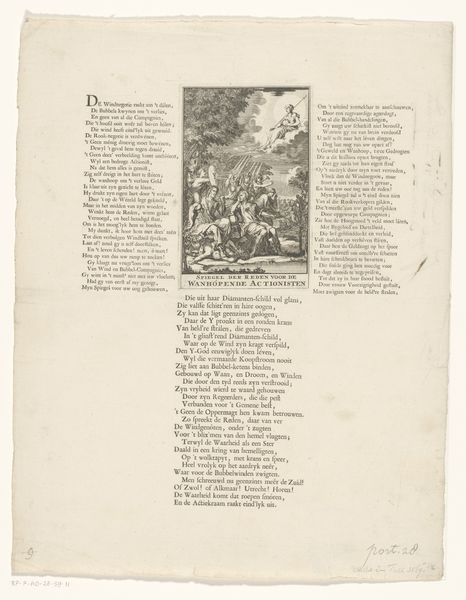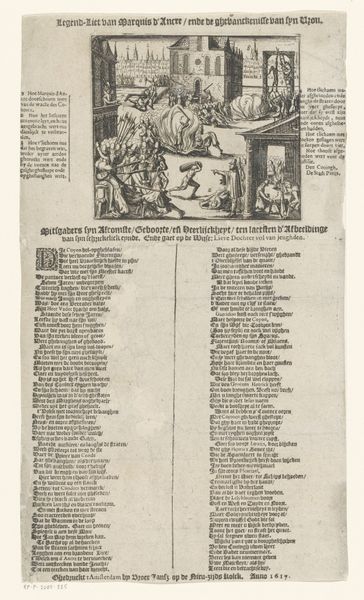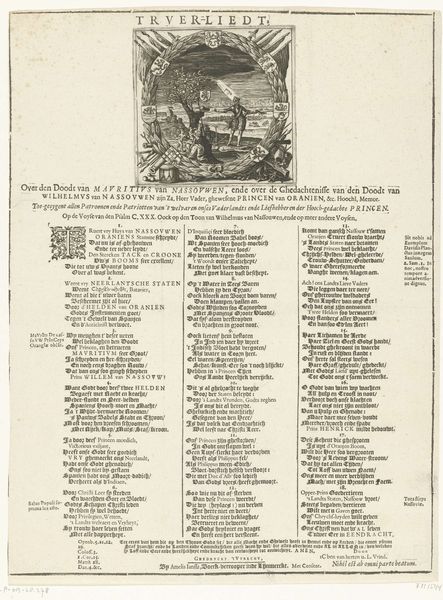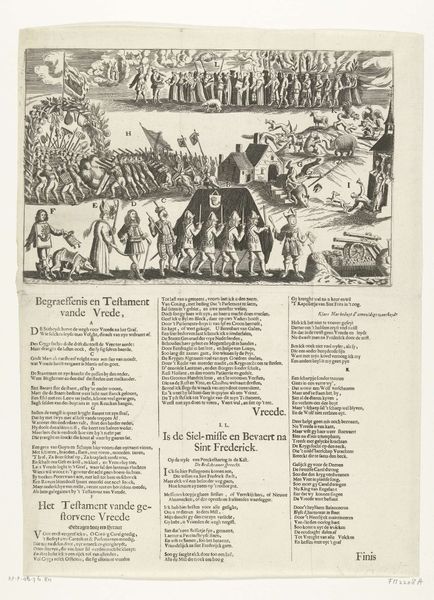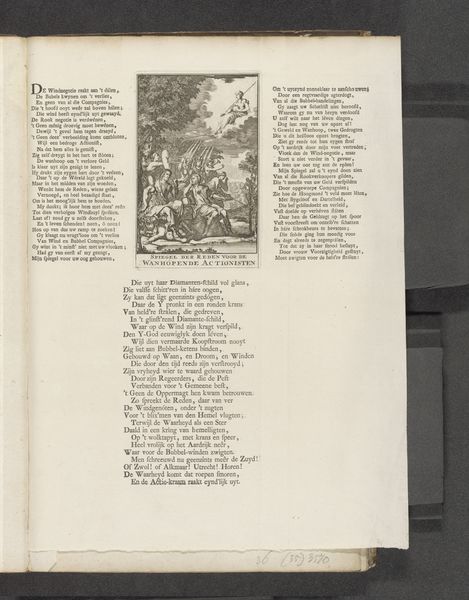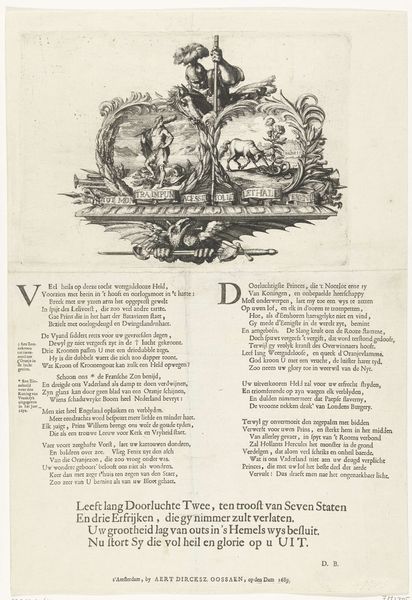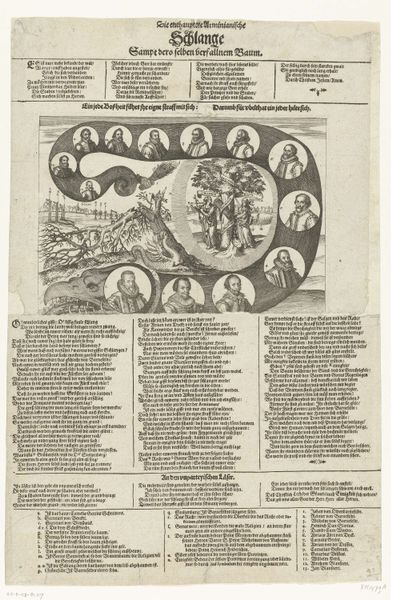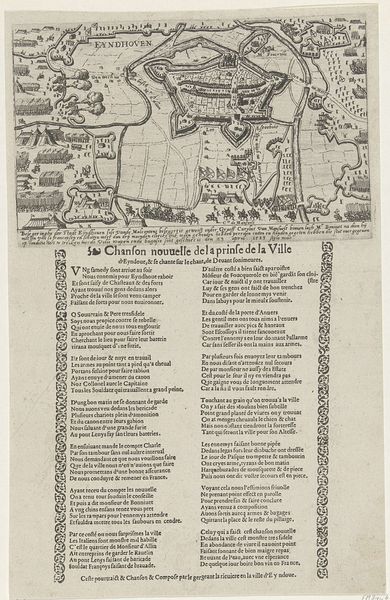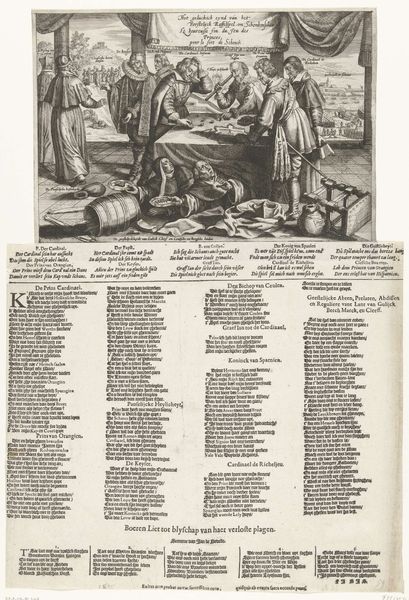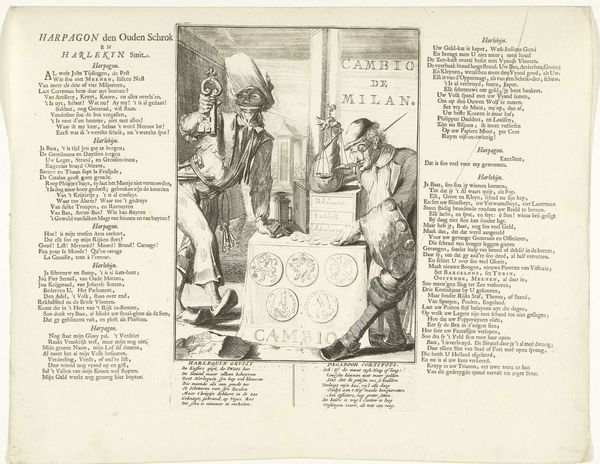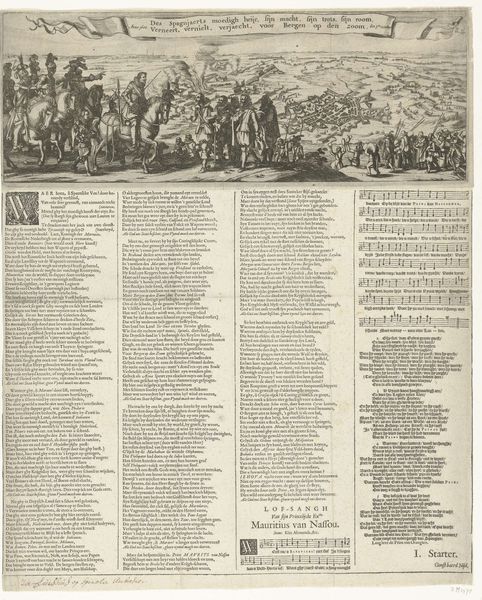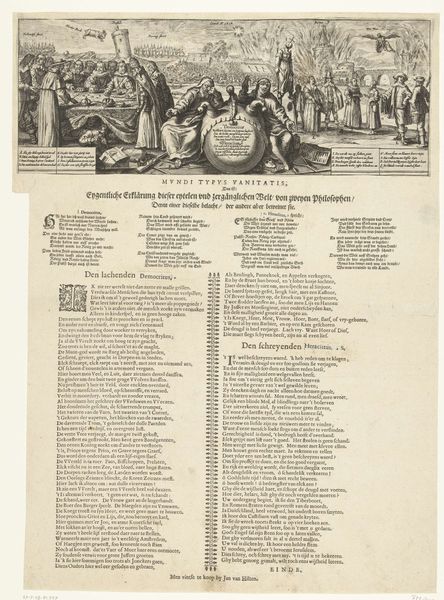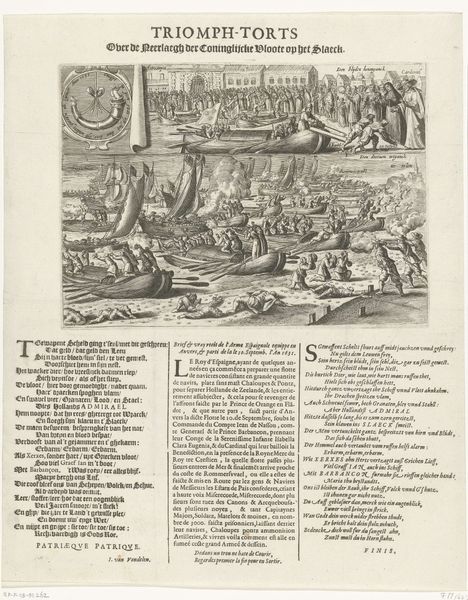
Spotprent op de nederlaag van Frederik van Bohemen en de in Nederland gezochte steun, 1620 1621
0:00
0:00
graphic-art, print, engraving
#
graphic-art
#
narrative-art
#
baroque
# print
#
history-painting
#
engraving
Dimensions: height 400 mm, width 270 mm
Copyright: Rijks Museum: Open Domain
Curator: We’re standing before a rather fascinating print titled “Spotprent op de nederlaag van Frederik van Bohemen en de in Nederland gezochte steun, 1620,” dating from around 1621. It resides here at the Rijksmuseum. It is, as the title suggests, an allegorical depiction of a political defeat. Editor: Wow, my initial reaction? It’s like a visual puzzle! A tiny stage filled with miniature figures acting out some epic, historical drama with slightly dark undertones. What’s with the bathtub in the middle of the chaos, or what appears to be one? Curator: It's a perfect encapsulation of Baroque sensibilities mixing detailed realism with symbolic density. The bathtub-like structure, indeed, holds figures who represent those in distress. The whole scene critiques Frederik van Bohemen’s failed bid for support from the Netherlands following his defeat. Editor: So, propaganda art, essentially? But why this swirling, almost chaotic composition? I feel overwhelmed, like I'm trying to decode a dream! Curator: Precisely! The chaos mirrors the political turmoil of the time, with various European powers vying for influence. The print served a clear political purpose, swaying public opinion and solidifying the Dutch Republic’s stance amidst these conflicts. The inclusion of text beneath the imagery offers explicit interpretations, ensuring the message was well received, though a modern audience struggles more to untangle it. Editor: I get it; the artist used layers to hammer a point, quite literally spelling it out to make sure the audience truly *grasps* the scene. The contrast is stark: detailed execution of figures versus a bird's-eye perspective that feels almost… cold. A bit cynical, perhaps? Curator: Absolutely. Consider the context: The Thirty Years' War was devastating Europe, redrawing political maps, and redefining allegiances. Prints like these became vital tools for disseminating information, or rather, a very particular interpretation of it, in a relatively accessible manner. Editor: It’s a reminder that art often wears a political mask. Even something that appears fantastical is deeply rooted in its own era. Thanks, it really made me reconsider the power of image and text combinations! Curator: Indeed. By examining it, we not only uncover the past's historical intricacies, but the mechanics of power embedded in visual culture. Thank you, your artist perspective greatly enriched our experience.
Comments
No comments
Be the first to comment and join the conversation on the ultimate creative platform.
